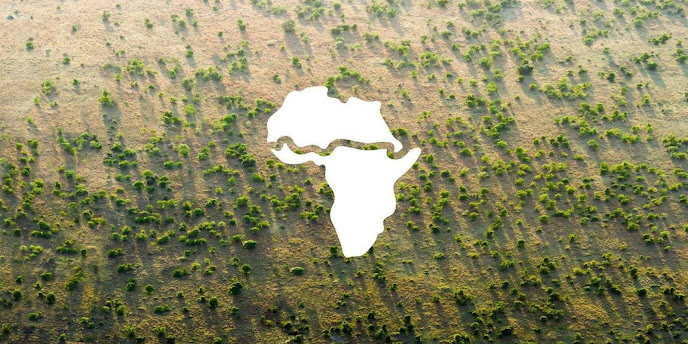Sahel's Rainfall Variability: Vegetation-Rainfall Feedbacks
This blog will focus on the interactions between vegetation and rainfall, also known as the vegetation-rainfall feedbacks.
At first, it was widely believed that the profound 1970s-1980s Sahel drought was mainly driven by positive vegetation-rainfall feedback via an albedo-based mechanism. Charney et al.(1975) proposed that overgrazing and agricultural expansion in the 1950s-1960s rainy period caused irreversible desertification in the Sahel, which led to an increase in surface albedo (surface albedo of land without vegetation is around 20% higher than the land covered by vegetation). As a result, more incoming solar radiation would be reflected back to space, and less heating would be received by the ground surface, which would reduce the convection, suppressing the formation of rainfall-generating clouds. A decrease in precipitation would, in turn, exacerbate desertification and lead to more rainfall suppression, creating a positive feedback loop. Although this mechanism is well-supported by several later studies, its effect is exaggerated (see the review by Brooks,2004). Remote sensing studies (e.g. Tucker et al., 1994; Prince et al., 1998) show that most desertification in the Sahel was reversible and can be interpreted as a natural response of the semi-arid ecosystem to climate variability.
 |
| Figure 1. Multi-data set observational moisture responses to positive local NDVI anomalies across the Sahel during 1982–2011. a.evapotranspiration (ET), b.2-m specific humidity, c.precipitable water, d.outgoing longwave radiation (OLR), e. precipitation, and f. frequency of wet days. In a–e, dots indicate statistically significant (p < 0.1) multi-data set average responses, referring to the right y-axis; open circles represent the 10th and 90th percentiles of the multi-data set responses, regardless of their statistical significance. In f, dots and open circles indicate significant and insignificant responses, respectively, using daily station precipitation data. Dashed lines indicate a response of zero. Bars indicate the multi-data set mean climatology of the response variable, referring to the left y-axis. σNDVI in the units of the response variables refers to one standard deviation in the Sahel NDVI anomaly. Labels on the x-axis stand for 3-month seasons, e.g., JFM for January, February, and March. The statistical significance is determined based on Monte Carlo bootstrap testing (Yu et al., 2017) |
Figure 2a shows a low-level cooling response to positive NDVI anomalies, consistent with the moisture recycling mechanism. Amplified evapotranspiration due to vegetation increase uses more heat flux and leads to a decline of surface air temperature. But this is contradictory to the response of the albedo-based mechanism that when vegetation cover increases, there would be less reflection of incoming solar radiation and an increase in surface air temperature. As shown in Figure 2b, the positive NDVI anomalies in the autumn lead to moderate reductions in surface albedo of savanna, woody savanna, and broadleaf evergreen forest in the Sahel. However, the magnitude of albedo changes is too small (on the order of 0.01–0.02 σ−1NDVI ), compared to the change in surface albedo of 0.21 used in Charney et al.(1975). Sahel's dominant vegetation cover, grassland and shrubland, also show minor albedo responses.
 |
| Figure 2. Observed local energy responses to Sahel NDVI anomalies during 1982–2011. a surface air temperature and b, temporal regression coefficient of monthly surface albedo upon standardised NDVI anomalies, averaged by biome type. In a, dots indicate statistically significant (p < 0.1, based on Monte Carlo bootstrap test) multi-data set average responses, referring to the right y axis; open circles represent the 10th and 90th percentiles of the multi-data set responses, regardless of their statistical significance; the dashed line indicates a response of zero; bars indicate the multi-data set mean climatology of the response variable, referring to the left y axis. In b, filled dots indicate statistically significant (p < 0.1) correlations, according to the Student's t-test; the size of the circles and thickness of lines denote the annual abundance of the corresponding biome across the Sahel, which is based on the remotely sensed land cover type from the International Satellite Land Surface Climatology Project (ISLSCP) initiative II International Geosphere-Biosphere Project (IGBP) DISCover and Simple Biosphere (SiB) Land Cover data set. The surface albedo is from the Global Land Surface Satellites data set. In both a and b, labels on the x axis stand for 3-month seasons, e.g., JFM for January, February, and March (Yu et al. 2017) |


Nice post, well written and showing good engagement with literature.
ReplyDeleteThank you!
Delete